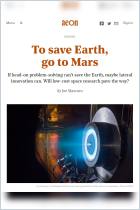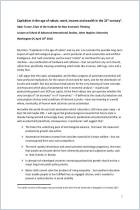
Recommendation
The smartphone, internet and social media are reshaping economies and society in the 21st century on a par with Johannes Gutenberg’s revolutionary invention of the printing press six centuries ago. That machine brought automation, competition and mass production to the world of information, with enormous consequences for people’s daily lives. In this fascinating and insightful historical analysis, economist Jeremiah Dittmar and data scientist Skipper Seabold report on the profound changes wrought by the printing press and cast them as precedents for the scope of the digital transformation taking place in the 2000s.
Summary
About the Authors
Jeremiah Dittmar is an assistant professor at the London School of Economics. Skipper Seabold is the director of data science at Civis Analytics in Chicago.
















Comment on this summary or 开始讨论